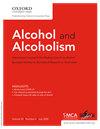中文名称:
法医化学
期刊缩写:
Forensic Chem.
影响因子:
2.2
ISSN:
print: 2468-1709
研究领域:
CHEMISTRY, ANALYTICAL
自引率:
14.80%
Gold OA文章占比:
18.63%
原创研究文献占比:
94.44%
SCI收录类型:
Science Citation Index Expanded (SCIE) || Scopus (CiteScore)
期刊介绍英文:
Forensic Chemistry publishes high quality manuscripts focusing on the theory, research and application of any chemical science to forensic analysis. The scope of the journal includes fundamental advancements that result in a better understanding of the evidentiary significance derived from the physical and chemical analysis of materials. The scope of Forensic Chemistry will also include the application and or development of any molecular and atomic spectrochemical technique, electrochemical techniques, sensors, surface characterization techniques, mass spectrometry, nuclear magnetic resonance, chemometrics and statistics, and separation sciences (e.g. chromatography) that provide insight into the forensic analysis of materials. Evidential topics of interest to the journal include, but are not limited to, fingerprint analysis, drug analysis, ignitable liquid residue analysis, explosives detection and analysis, the characterization and comparison of trace evidence (glass, fibers, paints and polymers, tapes, soils and other materials), ink and paper analysis, gunshot residue analysis, synthetic pathways for drugs, toxicology and the analysis and chemistry associated with the components of fingermarks. The journal is particularly interested in receiving manuscripts that report advances in the forensic interpretation of chemical evidence. Technology Readiness Level: When submitting an article to Forensic Chemistry, all authors will be asked to self-assign a Technology Readiness Level (TRL) to their article. The purpose of the TRL system is to help readers understand the level of maturity of an idea or method, to help track the evolution of readiness of a given technique or method, and to help filter published articles by the expected ease of implementation in an operation setting within a crime lab.
CiteScore:
| CiteScore | SJR | SNIP | CiteScore排名 |
|---|---|---|---|
| 5.7 | 0.986 | 1.092 | 学科 排名 百分位 大类:Social Sciences 小类:Law 44 / 1025 95% 大类:Medicine 小类:Pathology and Forensic Medicine 47 / 208 77% 大类:Materials Science 小类:Materials Chemistry 99 / 317 68% 大类:Chemistry 小类:Physical and Theoretical Chemistry 61 / 189 67% 大类:Chemistry 小类:Analytical Chemistry 53 / 156 66% 大类:Chemistry 小类:Spectroscopy 28 / 76 63% |
发文信息
中科院SCI期刊分区
2025年3月20日发布
| 大类 | 小类 | TOP期刊 | 综述期刊 |
|---|---|---|---|
| 3区 医学 | 3区 分析化学 CHEMISTRY, ANALYTICAL | 否 | 否 |
2023年12月发布
| 大类 | 小类 | TOP期刊 | 综述期刊 |
|---|---|---|---|
| 3区 医学 |
2区
分析化学
CHEMISTRY, ANALYTICAL
|
否 | 否 |
WOS期刊分区
| 学科分类 |
|---|
Q2CHEMISTRY, ANALYTICAL |
历年影响因子
| 2021年 | 3.0960 |
|---|---|
| 2022年 | 2.7000 |
| 2023年 | 2.6000 |
| 2024年 | 2.2000 |
历年发表
| 2016年 | 28 |
|---|---|
| 2017年 | 48 |
| 2018年 | 68 |
| 2019年 | 57 |
| 2020年 | 94 |
| 2021年 | 86 |
| 2022年 | 65 |
投稿信息
出版语言:
English
出版国家(地区):
NETHERLANDS
审稿时长:
46 days
发表时长:
4 days
出版商:
ELSEVIER
编辑部地址:
RADARWEG 29, AMSTERDAM, NETHERLANDS, 1043 NX
Forensic Chemistry - 最新文献
Resonance-enhanced deep-UV Raman spectroscopy for MDMA identification in colored ecstasy tablets
Pub Date : 2025-10-10 DOI: 10.1016/j.forc.2025.100704 Lars Jasperse , Merel C. Konings , Freek Ariese , Ruben F. KranenburgForensic analysis of tetrahydrothiophene (THT) at gas explosion scenes: Adsorption–desorption dynamics on common substrates
Pub Date : 2025-10-04 DOI: 10.1016/j.forc.2025.100703 Dong Han , Guan-Nan Zhang , Zhen-Wen Sun , Yao LiuComparing a machine learning approach with traditional methods for forensic source attribution using chromatographic data
Pub Date : 2025-10-04 DOI: 10.1016/j.forc.2025.100699 Jonas Malmborg , Ludvig Joborn , Mattias Beming , Anders Nordgaard , Ivo Alberink
免责声明:
本页显示期刊或杂志信息,仅供参考学习,不是任何期刊杂志官网,不涉及出版事务,特此申明。如需出版一切事务需要用户自己向出版商联系核实。若本页展示内容有任何问题,请联系我们,邮箱:info@booksci.cn,我们会认真核实处理。
本页显示期刊或杂志信息,仅供参考学习,不是任何期刊杂志官网,不涉及出版事务,特此申明。如需出版一切事务需要用户自己向出版商联系核实。若本页展示内容有任何问题,请联系我们,邮箱:info@booksci.cn,我们会认真核实处理。








